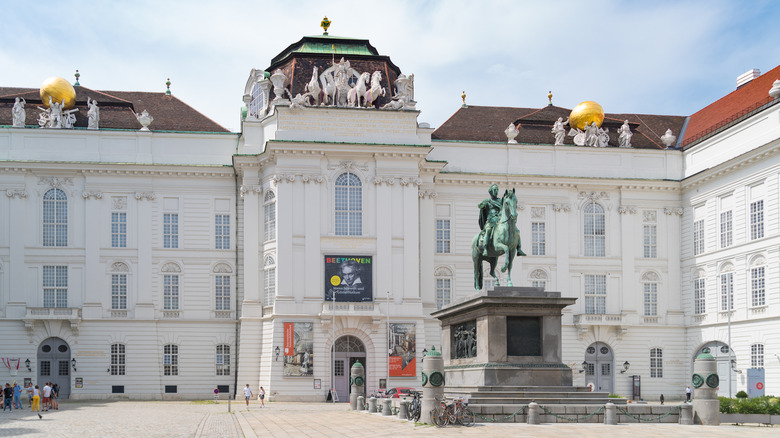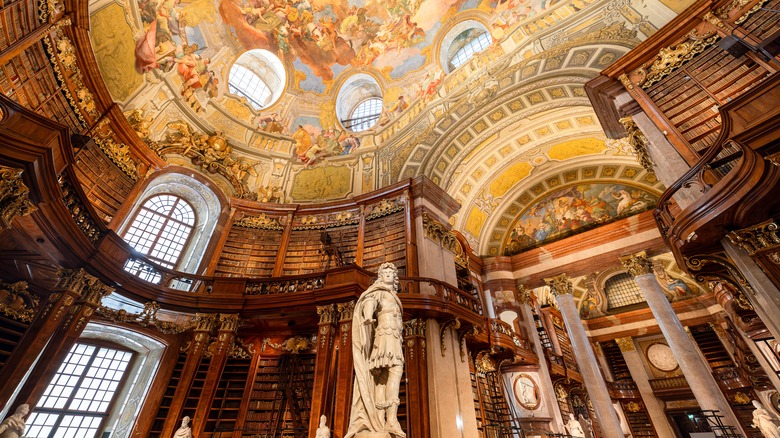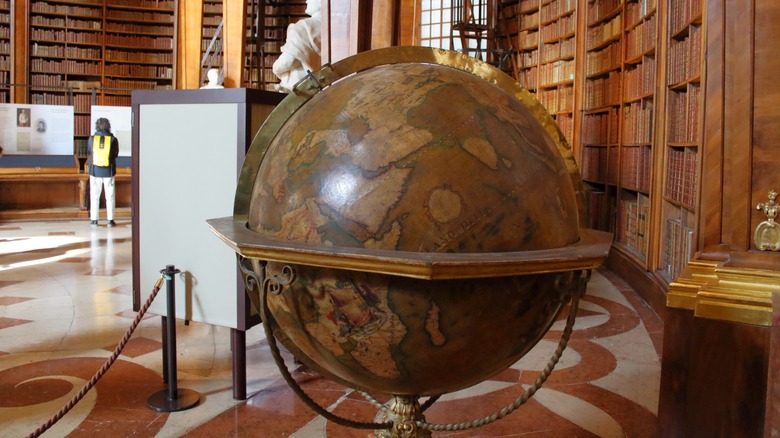Austria's Largest Library Is A Breathtaking Ornate Structure With An Impressive Collection
If one of your favorite scenes from "Beauty and the Beast" is when Belle glides across the bookshelves on the rolling ladder, followed by when the Beast presents her with the gorgeous library of her dreams, you will love the Austrian National Library.
This heaven for Bookstagrammers and Booktokers is part of the Hofburg Imperial Palace in Vienna. It belonged to the Habsburg royal family, the rulers of Austria from 1282 to 1918. Now, it houses over 11 million precious books and artifacts. It's the largest library in Austria and a treasure trove, with 19 reading rooms, 3.9 million books, and a plethora of unique antiquities, including manuscripts, incunabula, photographs, maps, globes, and more.
Even though Austria is one of the most overcrowded countries in Europe, you still need to see it for its gorgeous architecture and fascinating history. As the birthplace of the snow globe (invented in 1900) and the oldest Ferris Wheel in the world (built in 1897), Vienna is a magical and romantic city ripe with musical legacy — Mozart, Beethoven, Schubert, and others all performed in the Austrian capital. In addition to all the grandeur in Vienna, Nussdorf is a great example of untouristed wine country that is a must-see. So pack your bags and set your alarm — the best way to beat the crowds is to be an early bird!
An exploration of the State Hall
The most famous building in the Austrian National Library Complex is the State Hall, which you must prioritize if you are short on time. Like the Beast's library in real life but even more ornate and grand, the State Hall is 263 feet long and 66 feet high and is a glorious example of Baroque architecture with a 99-foot-high oval dome and several awe-inspiring frescoes.
Originally known as the Vienna Court Library, it traces its origin back to Medieval Europe when Duke Albert III ordered the transfer of books from the vaults and translated significant works from Latin to German. In 1722, the Holy Roman Emperor Charles VI commanded the construction of a library in Hofburg Imperial Palace. He appointed the architect Johann Bernhard Fischer von Erlach to design it, and his son, Joseph Emanuel, completed what is now known as the State Hall. The ceiling is adorned with intricate paintings from 1726 to 1730 depicting the deification of Emperor Charles VI. In the center is the emperor carrying a pyramid and laurel; below are portraits of the classical figures Apollo and Hercules. The iconic marble statue of Charles VI, depicted in the Roman style, is in the center of the room under the dome, which further cements the emperor's god-like reputation.
Keeper of collective memory
The Gospel Book is considered the founding codex of the Austrian National Library. Johannes von Troppau created the elaborate 386-page manuscript for Duke Albert III in 1368. It is a marvel of an object — meticulously written in gilded letters and embellished with vibrant illustrations. Also, watch out for the Mainz Psalter, a gorgeous book featuring multicolored printed decoration. It is considered the second-oldest text after the Gutenberg Bible.
After wandering through the State Hall, you can explore additional museums in the complex. The Papyrus Museum is the largest and most significant collection of ancient manuscripts. You will be transported to another time and place as you examine texts written on papyrus from over 3,000 years ago. Fascinating texts on parchment, leather, and wood panels document business deals, complaints, purchase receipts, and math exercises. The Globe Museum is a one-of-a-kind place that collects globes that reflect our changes in cartographic and cosmographic knowledge. From terrestrial and celestial to lunar and planetary, the spheres give us a glimpse into how earlier humans saw our world. We believe Belle's favorite room in the Austrian National Library complex would be the Literature Museum, a three-level collection of Austrian literature. Even if you can't read the text, you will be dazzled by an array of first-edition monographs and three-dimensional objects.


